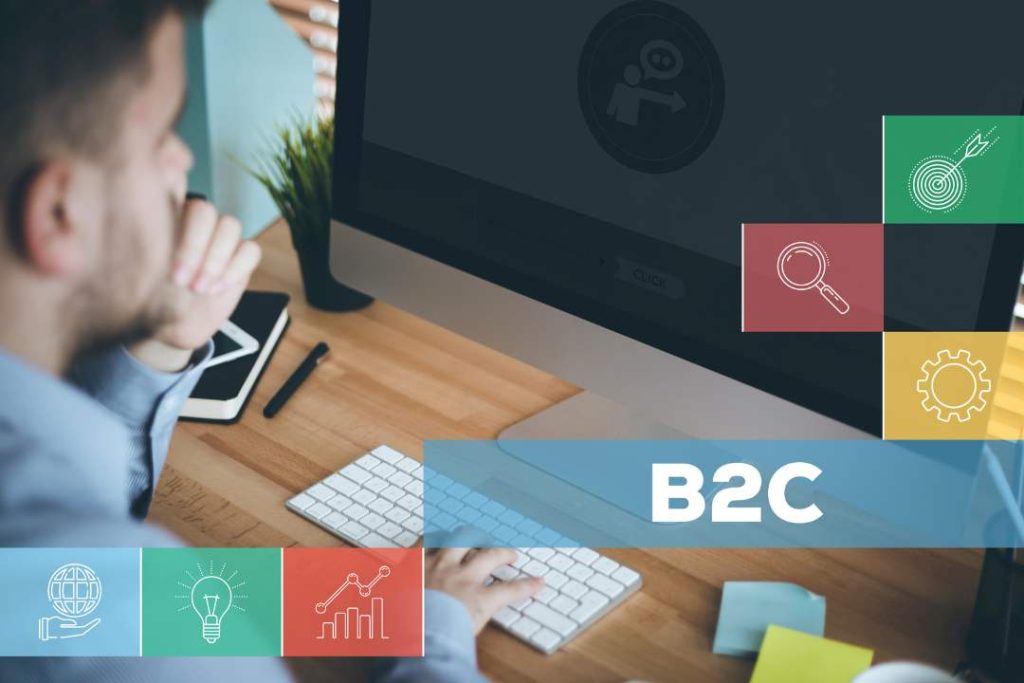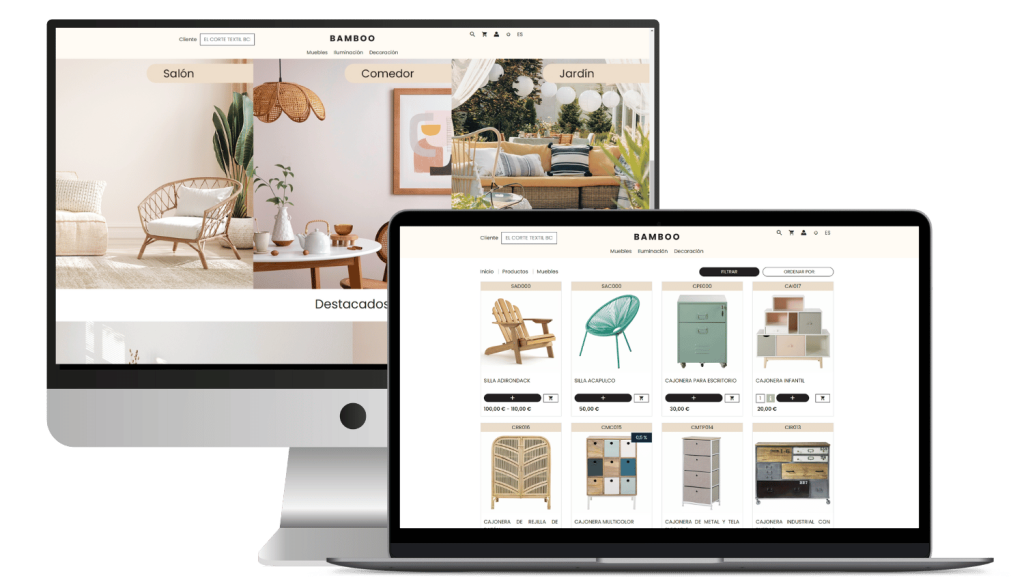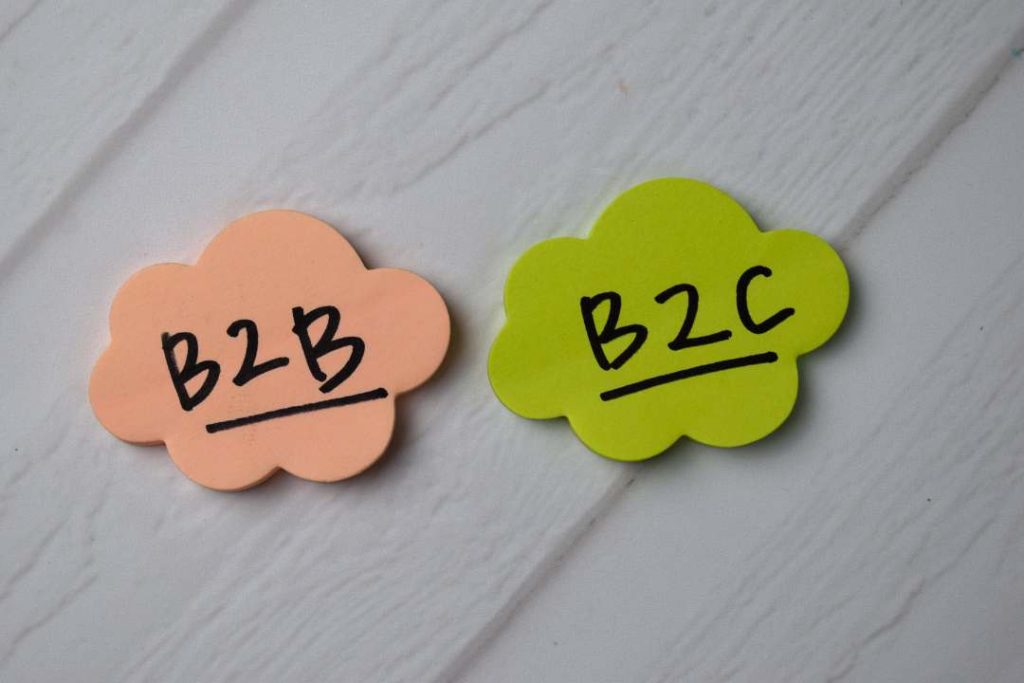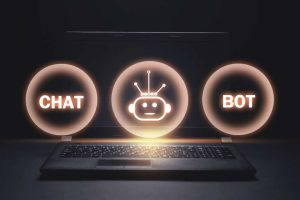Business to consumer (B2C): how it works and how it differs from B2B
In today’s world, e-commerce and direct business-to-consumer interactions are more relevant than ever. The business to consumer (B2C) model has taken a central role in the global economy, allowing companies to reach their customers in a more direct, efficient and personalised way.
In this article, we will explore how the B2C model works, what its main characteristics are and how it differs from the B2B model. (business to business). If you are an entrepreneur or are interested in better understanding these models, read on to find out everything you need to know about this model.

What is the Business to Consumer (B2C) model?
The term Business to Consumer (B2C) refers to the direct business relationship between a company and the end consumer.. En este modelo, las empresas venden productos o servicios directamente a los individuos, sin necesidad de intermediarios. Los ejemplos más comunes de este modelo son las tiendas online, los servicios de streaming, las marcas de ropa, entre otros.
Main features of the B2C model
Direct relationship with the consumer
The B2C model puts the end consumer at the centre of the strategy. This allows for direct and personalised communication, which seeks to create an emotional and personal connection with the customer.
Personalised marketing
In an information-saturated world, B2C companies invest heavily in personalised marketing to capture the attention of their consumers. Whether through social media ads, personalised emails or product recommendations based on user behaviour, all actions are focused on the consumer experience.
Focus on customer experience
In this model, the customer experience is essential to ensure satisfaction and loyalty. From browsing an online shop to customer service, every point of contact with the consumer is key to establishing a lasting relationship.

How the B2C model works
The Business to Consumer model encompasses a series of processes from the creation of the product to the final sale to the consumer. Let’s look at how this model works in detail:
From production to sale
The process begins with the creation of a product or service that meets the needs of the consumer. B2C companies often conduct market research to ensure that what they offer solves a problem or meets a specific need. They then produce, stock and distribute the products through different channels, such as online shops, physical shops, or both.
Business-to-consumer communication channel
One of the key aspects of this model is direct communication with the consumer. Through digital marketing, companies can reach their target audience through online advertising, social media, emails and personalised content. In addition, customer service plays a vital role, as consumers expect quick and effective responses to their questions or problems.
Payment methods and logistics
In the B2C model, consumers have access to a wide range of payment methods, such as credit cards, online payments, e-wallets and cash on delivery. In addition, logistics is critical in this model, as product delivery must be efficient and reliable. Companies must manage inventory, shipping and returns effectively to ensure customer satisfaction.

Key differences between B2C and B2B
Although B2C and B2B models have some similarities, there are fundamental differences that distinguish them.
Business objectives
In a Business to Consumer model, the main objective is to reach a large number of consumers and generate massive sales. B2C companies focus on selling directly to individual consumers, which implies quick and simple purchasing processes.
In contrast, in a B2B model, companies sell products or services to other companies, which implies a more long-term relationship. The focus is on building lasting partnerships and business relationships, and purchasing decisions are more complex and may involve several departments within the buying company.
Purchasing process
The buying process in a B2C model is usually quick and easy. Consumers make decisions based on emotional factors, such as product need, brand, price or convenience.
In contrast, in the B2B model, the procurement process is longer and more deliberate, involving multiple stakeholders and requiring a detailed assessment of investment, quality and business impact.
Marketing strategies
Marketing in the B2C model is focused on exciting the consumer. Companies use visual and emotional advertising campaigns to engage the customer, and take advantage of platforms such as social media and online advertising. Strategies include promotions, discounts, loyalty programmes and influencer marketing.
On the other hand, marketing in the B2B model is more about education and relationship building. Strategies such as content marketing, webinars, case studies and business events are used to attract interested companies. Content tends to be more technical and detailed, and is geared towards rational decision-making.
Advantages and challenges of the B2C model
Advantages
Access to a broad consumer base
One of the biggest advantages is the ability to reach millions of individual consumers. The Internet and social media have allowed these companies to expand their reach globally, generating more sales opportunities.
Greater flexibility in marketing strategies
B2C companies can experiment with different marketing strategies, quickly adapting them to market trends and changing consumer preferences.
Focus on customer satisfaction
Companies in this model tend to focus on delivering a superior customer experience, which increases loyalty and the likelihood of repeat purchases.
Challenges
Fierce competition
Due to the massive nature of the market, B2C companies face constant competition. Differentiating and standing out is key to surviving in this competitive environment.
Constant innovation
Consumers are looking for new experiences and products, so these companies must constantly innovate to stay relevant.
Maintaining customer loyalty
While B2C companies can easily attract new customers, maintaining their loyalty is a challenge. Competition is just a click away, which makes loyalty critical.
Transform your ERP into a powerful B2B ecommerce system

Your ideal B2C strategies in Stoam SaaS
The Business to Consumer (B2C) model is essential for companies looking to connect directly with their customers and generate mass sales. While there are key differences with the B2B model, such as the focus on the individual customer, the buying process and marketing strategies, both models have their own advantages and challenges.
If you are looking to optimise your business and take advantage of the opportunities offered by the Business to Consumer model, do not hesitate to consult our services. At Stoam SaaS we help you to implement effective B2C strategies. For any questions or further information, please do not hesitate to contact us at contact us.
Share:
Related Articles

What is a marketplace? Find out how to get the most out of it
What is a marketplace? Find out how to get the most out of it In today’s digital world, marketplaces have

Alibaba revolutionises B2B commerce with ‘Accio’ – the AI-powered search engine for SMEs
Alibaba revolutionises B2B commerce with ‘Accio’ – the AI-powered search engine for SMEs Share: Tabla de contenidos What is Accio

Examples of market segmentation: How to apply it in different sectors?
Examples of market segmentation: How to apply it in different sectors? In today’s competitive business landscape, market segmentation is more

Omni-channel strategy: How to integrate all channels to improve customer experience
Omni-channel strategy: How to integrate all channels to improve customer experience In a world where consumers use multiple channels to

What are open APIs and their role in SaaS solutions?
What are open APIs and their role in SaaS solutions? Open APIs have transformed the way businesses use software, especially

Analysis of B2B marketplaces: Are they an opportunity or a threat?
Analysis of B2B marketplaces: Are they an opportunity or a threat? B2B marketplaces are transforming the way companies buy and

How to use chatbots in B2B ecommerce to improve conversions
How to use chatbots in B2B ecommerce to improve conversions In the world of ecommerce B2B (Business to Business)shopper expectations

ERP and sustainability: How a system can reduce environmental impact
ERP and sustainability: How a system can reduce environmental impact Sustainability has become a crucial priority in today’s business landscape.

Customer journey in B2B: How to optimize the enterprise customer experience
Customer journey in B2B: How to optimize the enterprise customer experience Understanding the B2B customer journey is essential to optimize
Automate orders with Stoam SaaS b2b ecommerce

